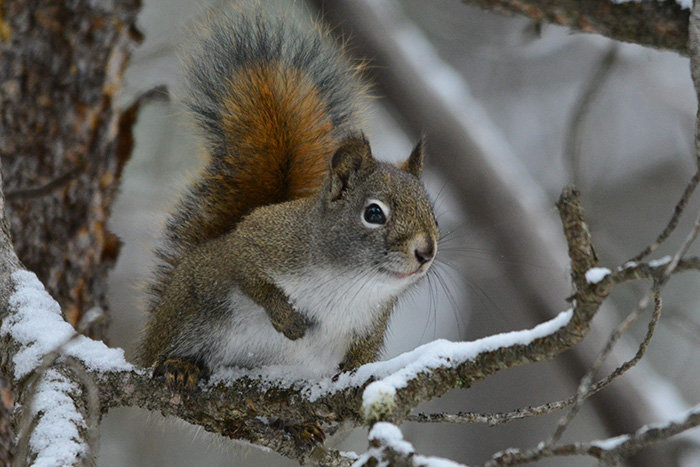SCHIESS: Chatter-bear squirrels know how to survive winter
Published at | Updated at
It was a clear, crisp day as I sat under a lodge pole pine on Big Bend Ridge in Island Park when it started raining – not rain drops, but pine cones. I did not get hit, but close enough to make me wonder if the drops near me were on purpose; probably not.
As I moved away from my resting place, the squirrel started alerting the world that I had intruded on its territory and was on the move. The chattering caused other neighbors to start a chorus – thus earning them the nickname of “chatter bears.”
The Red squirrel, locally known as a Pine squirrel, was in the process of harvesting its two-year supply of food; much like some of the humanoids of the area are counseled to do. They take life seriously. They harvest over 10,000 cones from pine, fir and spruce trees, then gather the cones in piles of several hundred each and fill hollow logs and holes in the ground. The cones stored in logs are intended for long-time storage as they are protected from the sun that will pop open the cones and destroy the food value.
Like most crops, evergreens have good and bad years. Some years they are loaded and some they are barren, making the squirrels store several years of food to fuel their nervous bodies through the cold months. The squirrels are capable of locating the piles of cones by memory and smell under a foot of snow.
They not only harvest cones but mushrooms, even ones poisonous for humans. These are dried, cached and hoarded. If you have ever found a mushroom wedged in the branches of a bush, it was placed there by a squirrel or chipmunk to dehydrate them before being stored. By doing this, they also become an important source of spreading fungal spores through the woods. The squirrels become not only hunters and gatherers, but also farmers.
Last fall I located a large pile of cones with an empty alcoholic can with it. Each time I checked the cones, the can had been moved and had fresh dents in it. Was this a hard drinking squirrel? Was a little liquid in the can used for flavoring the cones, or did the neighborhood of squirrels get together to play kick the can? Only the squirrels know.
Squirrels will generally eat on a low growing branch and as they discard scales and cores huge piles of waste are built up. These sites are known as middens and a squirrel’s territory is defined by them and may contain several of them.
During the spring and summer, the squirrels will often eat a variety of food including bird eggs and nestlings along with hare leverets (young Snowshoe hares). Berries, flowers and other plant seeds are consumed when they are available.
The reproduction of Red squirrels is a unique one in the animal kingdom. They are spontaneous ovulators as the females are only in estrus for one day and that day is a busy one. The female will often travel from their territory a few days before to advertise her condition. On the fertile day she will mate with from four to 15 males with them competing for the mating opportunity. Usually in most animal species, the male will mate with multiple partners but the female usually only with one. In the squirrel world, both genders are busy when the day is right.
Life expectancy for Red squirrel is rather short – about 2.5 years. Dangers lurk everywhere. Owls, hawks, ravens and crows hunt them from the air; bobcats, lynx, fox, coyotes and wolves on the ground and weasels and marten in the trees.
No wonder they chatter so much. When an intruder comes into their territory, they must warn their neighbors to help the specie survive, and just maybe the raining of cones near one’s head may also be an offensive attack.






